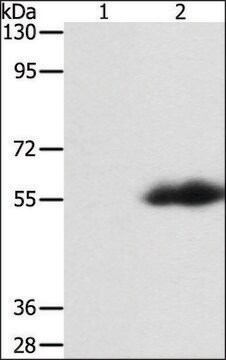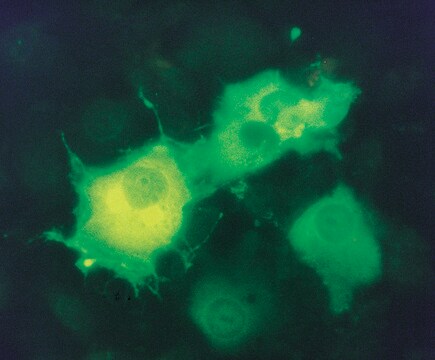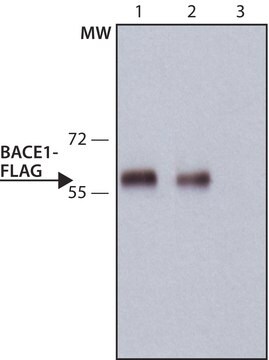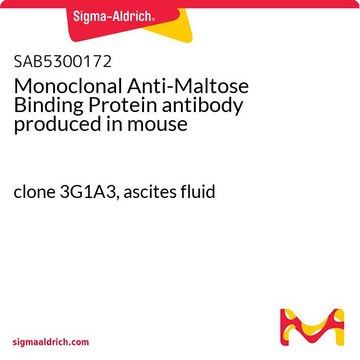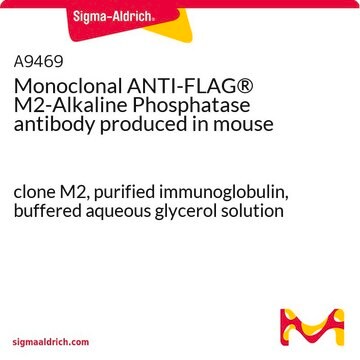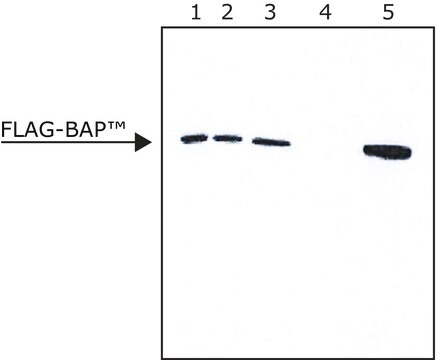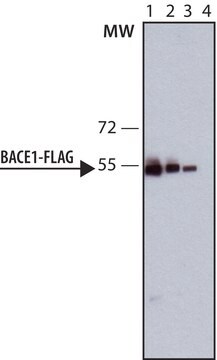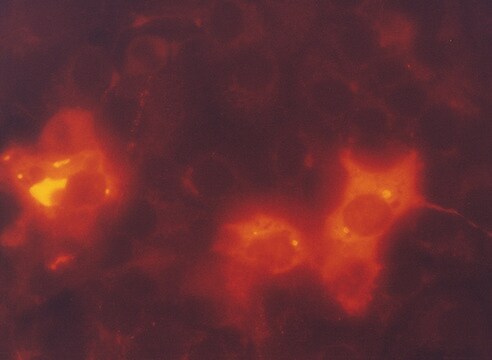F2555
Rabbit Monoclonal ANTI-FLAG® Clone SIGI-25
clone SIG1-25, ascites fluid
Sinonimo/i:
Anti-ddddk, Anti-dykddddk
About This Item
Prodotti consigliati
Origine biologica
rabbit
Livello qualitativo
Coniugato
unconjugated
Forma dell’anticorpo
ascites fluid
Tipo di anticorpo
primary antibodies
Clone
SIG1-25, monoclonal
tecniche
immunocytochemistry: 1:125-1:250 using transiently transfected cells expressing FLAG (sequence at the N-terminus)-tagged protein fixed with paraformaldehyde/Triton™ X-100
indirect ELISA: suitable
western blot: 1:250-1:500 using extracts of transiently transfected cells expressing FLAG (sequence at the N-terminus)-tagged protein
Isotipo
IgG
Sequenza immunogenica
DYKDDDDK
Condizioni di spedizione
dry ice
Temperatura di conservazione
−20°C
Descrizione generale
Specificità
Immunogeno
Applicazioni
- immunofluorescence
- western blot analysis
- immunocytochemistry
- indirect ELISA
Learn more product details in our FLAG® application portal.
Stato fisico
Note legali
Non trovi il prodotto giusto?
Prova il nostro Motore di ricerca dei prodotti.
Codice della classe di stoccaggio
10 - Combustible liquids
Classe di pericolosità dell'acqua (WGK)
WGK 3
Punto d’infiammabilità (°F)
Not applicable
Punto d’infiammabilità (°C)
Not applicable
Dispositivi di protezione individuale
Eyeshields, Gloves, multi-purpose combination respirator cartridge (US)
Scegli una delle versioni più recenti:
Possiedi già questo prodotto?
I documenti relativi ai prodotti acquistati recentemente sono disponibili nell’Archivio dei documenti.
I clienti hanno visto anche
Contenuto correlato
Protein and nucleic acid interaction reagents and resources for investing protein-RNA, protein-DNA, and protein-protein interactions and associated applications.
Il team dei nostri ricercatori vanta grande esperienza in tutte le aree della ricerca quali Life Science, scienza dei materiali, sintesi chimica, cromatografia, discipline analitiche, ecc..
Contatta l'Assistenza Tecnica.


